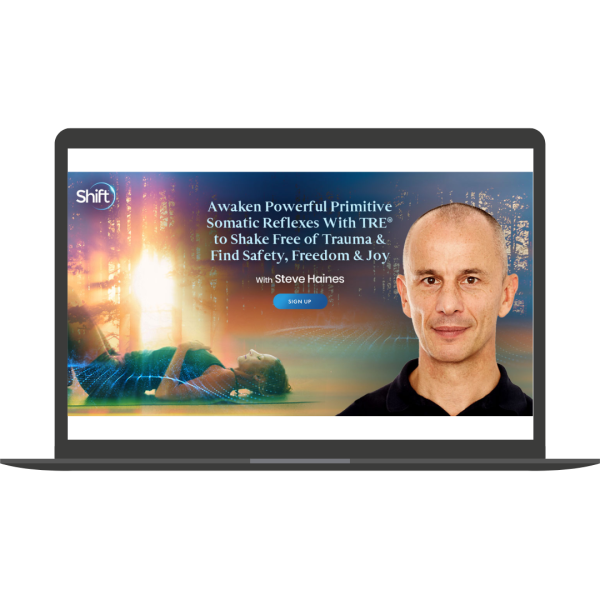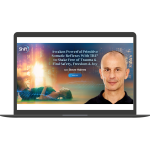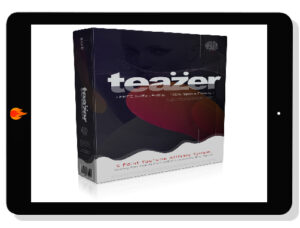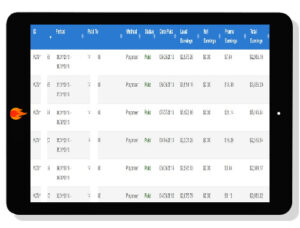Awaken Powerful Primitive Somatic Reflexes with Steve Haines: A Comprehensive TRE® Training Introduction to the Course Join bodyworker, teacher, and author Steve Haines for an enlightening journey through the principles and practices of TRE®. This course is designed to help you overcome trauma, enhance your emotional and physical health, and foster a deep sense of safety and joy through the activation of your body’s primitive reflexes. What You Will Learn From “Steve Haines – Awaken Powerful Primitive Somatic Reflexes With TRE® to Shake Free of Trauma & Find Safety, Freedom & Joy“? Discover TRE as a simple and effective somatic practice that harnesses the power of your primitive reflexes to release stress, tension, and trauma on all levels of your beingExplore the TRE ritual of 7 exercises that trigger your natural tremor mechanismRecognize the reliable, early signs of distress, including signs that show when you’re more activated than you realizeLearn the power of avoiding freezing, flooding, and dissociatingPractice guided techniques to support tremors in your hips, spine, and shoulders, and contain feelings when they’re going too quicklyDeepen your understanding of trauma theoryDiscover how emotions are related to sensationsExplore the powerful truth that you don’t always need to talk about the past to heal in the presentLearn about polyvagal theory and your core survival gestures of moving from safe and social to fight-or-flight to freezeDeepen your appreciation of the diverse and complex range of psychological behaviors you exhibit when you’re overwhelmedReturn to the simplicity of finding safety in your body via shakingPace yourself and create an ongoing practice for self-healing What You’ll Discover in These 7 Modules In this 7-module transformational intensive, Steve will guide you through the fundamental skills you’ll need to successfully integrate a TRE practice into your daily life — that activates your body’s natural reflexes to alleviate deeply held stress, tension, and trauma, while bolstering your built-in capacity to regulate your own wellbeing. This course will feature step-by-step teachings and experiential practices with Steve. Each session will build harmoniously upon the previous ones, so you’ll develop a complete holistic understanding of the practices, tools, and principles you’ll need to optimize and sustain your health and wellbeing with integrated TRE — for a life of freedom, ease, and joy Module 1: The Joy of Shaking Shaking is a simple, safe tool to help you feel more connected and alive. Developed by Dr. David Berceli, Tension and Trauma Releasing Exercises (TRE), trigger a natural shaking reflex. In this opening module, Steve will take you through the history of shaking, a lost practice in many healing traditions. He’ll share insights from ethology — the study of animal behavior — and explain how shaking is a mammalian reflex for discharging stress. This module will be all about finding safety in the body and the essentials of embodied approaches to working with overwhelm. To heal trauma, you don’t need to understand or to remember. You also don’t need to talk about your most difficult experiences! You’ll begin working with Steve’s bottom-up approach, where you’ll heal trauma by reconnecting to your body. When you switch off protective reflexes of fight-or-flight or freeze, you free yourself from intrusive thoughts, pain, and stuck emotions. TRE teaches how to be with intense feelings — without becoming overwhelmed. Shaking is a powerful stimulus to help you release chronic stress and tension. As you’ll discover, shaking helps you wake up your body. In this module, you’ll: Explore theimportance of feeling safe, being playful, and being curiousLearn how to turn on, pay attention to, and,turn off tremorsDiscover the TRE ritual of 7 exercisesthat trigger your natural tremor mechanismLearn aboutDr. David Berceli and the history of TREUnderstand core principles from the latest science of traumaStart to identify whenprimitive reflexes begin to hijack your mind and body Module 2: Grounding & Shaking to Connect There is a hidden response to traumatic events. Nearly everyone knows about the stress response of speeding up to survive… … but not enough people know about the shutdown response, in which we slow down to survive. Steve will explain how shutdown is also known as freeze, dissociation, collapse, and playing dead. Shutdown’s essence is a gesture of immobilizing and switching off so you can survive. Dissociation is the essence of trauma. For many survivors, it’s the hidden mystery at the heart of trauma. It’s a very confusing state, where you can feel numb, disconnected, and empty. Frequently, you feel stuck, unable to think or act. Often, it feels horrible and scary. Sometimes, however, dissociation can feel safe, floaty, and expansive, as though you’re no longer bound by your body. The main chemicals of dissociation are endorphins — your body’s natural painkillers. For many of us, there is a seductive, cozy quality to dissociation. It can seem easier to not feel and to tune out, rather than to remain present. The opposite of dissociation is beinggrounded — a beautiful, earthy word that describes being present and connected.As you’ll discover, groundedness is a state in which you’re at home in your body, and observant of the space around you. In this module, you’ll: Learn how to feel safe in your bodyPractice simple tools for being groundedDiscover when daydreaming becomes too muchUnderstand the barriers that make it hard to connect to the bodyDiscover the power of moving slowly with intense feelings Module 3: Self-Regulation for Healing Trauma All modern trauma therapists focus on teaching how to regulate intense feelings. It’s now well understood that going slow is actually the quickest way to heal trauma. Feeling is difficult, yet it’s a skill that can be taught. Often you’ll need support and community to help you co-regulate before you can self-regulate. If things are feeling too strange, too quick, too much, or too floaty during the tremor process — you can learn to put the brakes on and stop. By learning to regulate the tremors of TRE, you can learn to regulate all feeling states. You’ll develop your skills and strength to help you build a strong, resilient container to hold your trauma. In this module, you’ll discover: How to practice going slow as the quickest way to heal traumaWays to recognize the reliable, early signs of distress, including signs that show when you’re more activated than you realizePrinciples for self-regulation: OMG, not as in Oh My God, but as in Orient-Move-GroundThe power of avoiding freezing, flooding, and dissociatingA guided practice to intervene and contain feelings when they’re going too quickly Module 4: Free Your Body — Shake to Release Tension has a habit of creeping up on us. If we’re not careful, we become a bag of contractions, holding on tightly each and every day in order to survive. When you’re braced against life and you’re stuck trying to protect yourself, it’s hard work. With TRE, you can shake it off. You can let go and allow natural tremors to free your body from the inside — a wonderful feeling. You’ll explore the key metaphor of releasing tension and trauma. You’ll encourage the tremors to meet the stuck parts of your body. Steve will share plenty of tips and tricks to help the tremors move seamlessly through your whole body. He’ll help you understand the basic structure of the body so you can appreciate where and why tremors can get stuck. In this module, you’ll: Learn how toshake it offDiscover theliving matrix of fasciain your bodyLearn about your diaphragm andslow, gentle breathingCome out of stuck patterns tonew creative possibilitiesPractice techniques to support tremorsin your hips, spine, and shoulders Module 5: To Heal, You Don’t Need to Understand or Remember How do the mind and body connect? This is a very old problem. Shaking is an amazing training in mind-body connection. At the heart of TRE is profound trust in the wisdom of the body. Trauma is seen as primarily a physiological response rather than a psychological problem. To heal trauma, you don’t need to understand or remember. The goal is toturn down the dial on protective reflexesthat are trying to speed you up or shut you down so you can survive. This a radical paradigm shift away from thinking and understanding as the key elements of healing. You’ll learn how emotions are rooted in the body’s sensations. Steve will guide you to notice and label feelings — and have feelings, rather than become them. In this module, you’ll: Deepen yourunderstanding of trauma theoryDiscover how emotions are related tosensationsFind new ways ofdescribing and inhabiting your bodyUnderstand thattrauma is about physiology, not psychologyLearn thatyou don’t always need to talk about the pastto heal in the presentPractice newfeeling states Module 6: The Neurobiology of Trauma This module is a deeper dive into how the nervous, hormone, and immune systems are involved in trauma. Many people are surprised to learn they’re not mad, bad, or broken. When you truly comprehend that protective reflexes arenormal reactions to extraordinary events, you take a massive step forward in your healing. Steve will introduce you to Dr. Stephen Porges’ research — as you’ll discover, it’s full of very influential scientific discoveries about primitive survival reflexes. Steve will make Dr. Porges’ polyvagal theory simple and relevant to your daily life. He’ll explain how, as your perception of a threat increases, you might default to your older reflexes to survive. It’s your neurobiology responding to perceived danger, and Dr. Porges outlines this process in the stages ofOrientation, Mobilization, and Immobilization. In this session, Steve will also review the literature on stress and highlight the insights you can use in ordinary life. In this module, you’ll: Develop your understanding of stressBriefly touch on the complexity of trauma and its wider models in psychologyLearn about polyvagal theory and your core survival gestures of moving from safe and social to fight-or-flight to freezeDeepen your appreciation of the diverse and complex range of psychological behaviours you exhibit when you’re overwhelmedReturn to the simplicity of finding safety in your body via shaking Module 7: Interventions to Enhance Your Wellbeing This final module is a chance to rediscover being playful with the tremor process. After you’ve moved through the previous sessions, there may be all sorts of change happening within you. You’ll explore classic tools and interventions in TRE to help find coherence, variety, and fluidity in your shaking process. Building confidence in the strength and power of your body and the tremors can take time. Steve will give you a framework for how tremors commonly progress — and how to develop a sustained TRE practice.TRE is about you healing yourself. It’s a powerful tool to support your ongoing healing journey. There are times to develop your strength and resilience as you learn to let go. Other times, you’ll want to go gently, slowly building your capacity to feel. In this module, you’ll: Discover how tobuild resilienceDevelop your skillsto trust the tremorsLearn how topace yourself and create an ongoing practicefor self-healingRecognizewhen to speed your practice upand when to calm things downUnderstand the power of being curious and playful What People Are Saying About Steve Haines? “I feel I have a useful life skill to continue to use and build on in the future.” I liked the balance of theory and practice and the carefully facilitated shaking sessions. It felt very safe and encouraging. It was great to have firsthand experience of TRE and something I would also recommend to friends, family, and clients. I feel I have a useful life skill to continue to use and build on in the future. — Brenda Barrass-Pay, psychotherapist “My hips and pelvis have opened up and loosened up in a way they haven’t felt for years…” My hips and pelvis have opened up and loosened up in a way they haven’t felt for years, especially since childbirth. — Kate Munden, EFT and NLP practitioner FAQs Who is this course for?This course is ideal for anyone looking to overcome personal trauma, therapists seeking to expand their toolkit, or individuals interested in body-based healing practices.What are the prerequisites for this course?No prior experience is necessary. This course is suitable for beginners as well as those with a background in trauma work or body practices.How long is each module?Each module consists of a 90-minute session designed to build upon the previous, creating a comprehensive learning experience.Can I practice these exercises on my own?Yes, after learning the exercises under guidance, you can practice TRE® independently to continue improving your health and emotional balance. Who Is Steve Haines? Steve Haines, a bodyworker for over 20 years, is the author of the award-winning Anxiety Is Really Strange, part of a series of graphic books that include Pain Is Really Strange, Trauma Is Really Strange, and Touch Is Really Strange. Understanding the science of pain and trauma has transformed his approach to healing. He has studied yoga, Shiatsu, Biodynamic Craniosacral Therapy (BCST), and Trauma Releasing Exercises (TRE®). A UK registered chiropractor, he teaches TRE and BCST all over the world. His treatments use education, embodied awareness, and light touch to help people move more freely and be more present. Steve lives and works between London and Geneva. Conclusion Steve Haines’ “Awaken Powerful Primitive Somatic Reflexes” online course offers a unique opportunity to explore the potent effects of TRE® for trauma recovery and overall well-being. Through this training, you will learn to activate your body’s natural healing capabilities, leading to a life marked by greater freedom, safety, and joy. Enroll now to start your journey towards profound personal transformation.
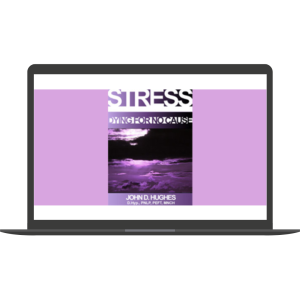 John Hughes – Stress Dying For No Cause
₹2,400.00
John Hughes – Stress Dying For No Cause
₹2,400.00
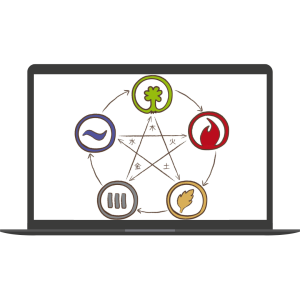 Mantak Chia – Inner Alchemy Basic Comprehensive
₹14,080.00
Mantak Chia – Inner Alchemy Basic Comprehensive
₹14,080.00
Steve Haines – Awaken Powerful Primitive Somatic Reflexes With TRE® to Shake Free of Trauma & Find Safety, Freedom & Joy
₹10,560.00

